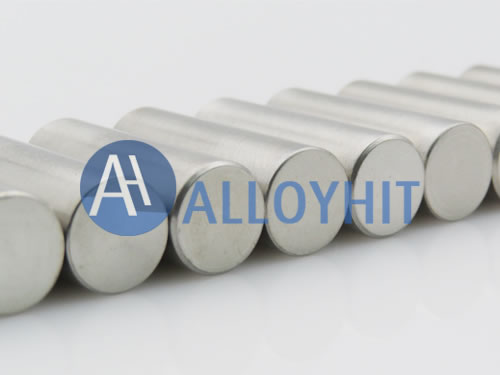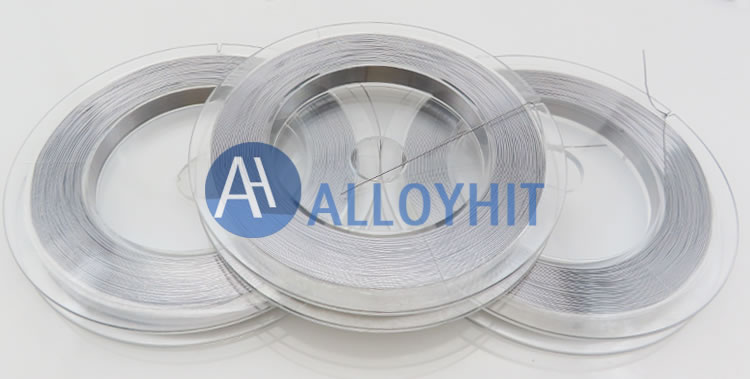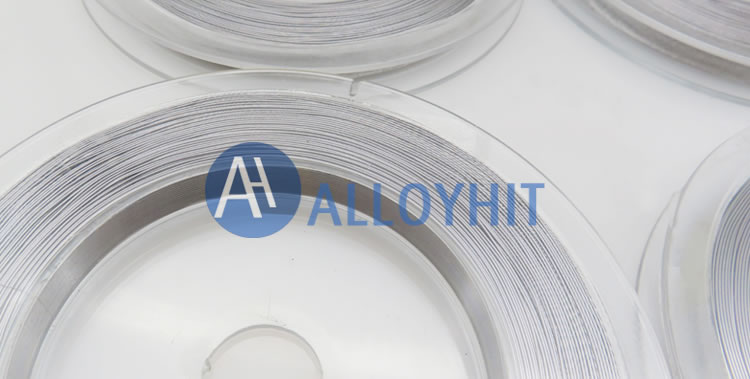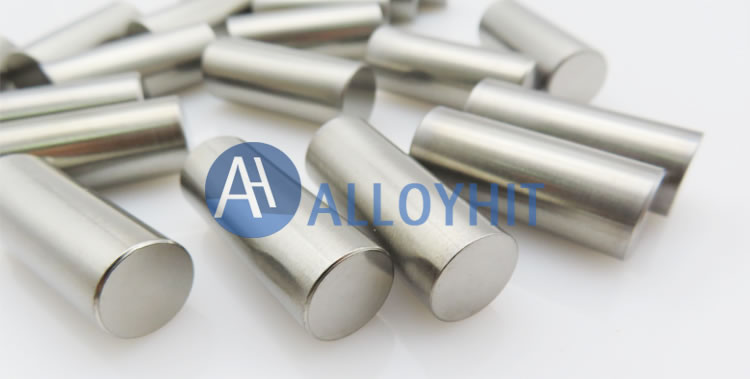
Size of Ta10W Rod and Ta10W Wire
| Forms | Standard | Diameter range /mm |
| Ta10W rolled, swaging or drawn rod, wire | ASTM B365 | 0.2~63.5 |
Grades and Standards of Ta10W Rod and Ta10W Wire
| Forms | Grade | Standard |
| Rods and Wire | RO5255 | ASTM B365 |
Mechanical properties of Ta10W Rod and Ta10W Wire(annealed state)
| Diameter | Tensile Strength /psi(MPA)≥ | Yield Strength /psi(MPA)≥ | Elongation (gauge length 25.4mm)/%≥ |
| 3.18mm~63.5mm | 70000(482) | 55000(379) | 20 |
| 0.635mm~3.14mm | 70000(482) | 15 | |
| 0.381mm~0.633mm | 70000(482) | 10 | |
| 0.254mm~0.379mm | 70000(482) | 5 |
The maximum gas impurity content (mass fraction)% of Ta10W rod and Ta10W wire of American Society for Testing and Materials
| Name | O | N | H | C |
| Electron beam melting (RO5255) Vacuum arc melting (RO5255)Ta10W | 0.025 | 0.01 | 0.0015 | 0.02 |
Processing of Ta10W Rod and Ta10W Wire
Ta10W wires and Ta10W Rods are mainly processed by extrusion, forging, rolling and drawing; they are usually supplied in the crystallized annealed state, the stress relief annealed state and the cold worked state. The purpose of annealing is to bring the material to a recovered or recrystallized state, thereby restoring the plasticity of the material to facilitate further processing or to achieve the required flattening properties.

Specifications and Tolerances of Ta10W Rod and Ta10W Wire
| Diameter/in(mm) | Tolerance/in(mm) | Diameter/in(mm) | Tolerance/in(mm) |
| 0.01~0.020(0.254~0.508) | ±0.000 5(±0.013) | 0.020 ~0.030 (0.508~0.762) | ±o.000 75 (±0.019) |
| 0.030~0.060(0.762~1.524) | ±0.001 (±0.025) | 0.060~0.090(1.524~2.286) | ±0.001 5(±0.038) |
| 0.090~0.125(2.286~3.175) | ±0.002 (±0.051) | 0.125~0.187(3.175~ 4.750) | ±0.003 ( ±0.076) |
| 0.187~0.375(4.750 ~9.525 | ±0.004 (±0.102) | 0.375~0.500(9.525~12.70) | ±0.005(±0.127) |
| 0.500~0.625-(12.70~15.88 | ±0.007(±0.178) | 0.625~0.750 (15.88- 19.05) | ±0.008(±0.203) |
| 0.750~1.000(19.05 ~ 25.40) | ±0.010(±0.254) | 1.000~1.500(25.40~38.10) | ±0.015 (±0.381) |
| 1.500~2.000(38.10~50.80) | ±0.020(±0.508) | 2.000~2.500(50.80~63.50) | ±0.03 (±0.762) |
Bending requirements: The allowable deviation of the curvature of any length of round product should not exceed 0.05in (1.27mm)/ft (304.8mm)
Heat treatment of Ta10W Rod and Ta10W Wire
Ta10W has excellent plasticity. Most tantalum alloys can be subjected to deformation processing such as punching, rolling, drawing, spinning, bending, and extrusion at room temperature. The total processing rate between two annealings can reach 98%, and the processing rate of passes is ≤60% .
Ta10W is easily oxidized when heated in air, and cannot be hot-pressed in an unprotected state. Thermal processing (such as forging, extrusion, etc.) must be coated with an anti-oxidation coating, or carried out in a vacuum (vacuum degree ≤5×10-²Pa) or in an inert gas protective atmosphere (generally not argon).
Recrystallization annealing specification: In the vacuum state, Ta10W is heated to the protection temperature of 1200~1450℃ with the furnace, kept for 1~2 hours, and the temperature is cooled down with the furnace to no more than 60℃ after power off.


Welding performance of Ta10W Rod and Wire
Ta10W rods and wires must be welded in an inert gas (usually argon) protected environment or in a vacuum state.
Application of Ta10W Rod and Ta10W Wire
Ta10W rods and Ta10W wires have the characteristics of high melting point, corrosion resistance and good cold working performance, and are widely used in chemical, atomic energy, aerospace and other industries and high temperature technologies.
Chemical industry: Ta10W rods are also commonly used in various occasions with high temperature resistance and corrosion resistance.
Although the one-time investment cost of Ta10W is high, the long-term operation and maintenance cost is low, and the comprehensive cost performance is high.
Aerospace industry: Ta10W can be used as heat-resistant and high-strength materials for supersonic aircraft, rockets and missiles, as well as control and adjustment parts. Ta10W can be used at high temperature of 2500℃.
High temperature technology: Ta10W bar can be used to make supporting accessories and heaters of high temperature vacuum furnace, which is more stable and easier to process than tungsten and molybdenum. Ta10W pipes can also be used to make protective tubes for high temperature thermocouples.


 +86 13120915623
+86 13120915623